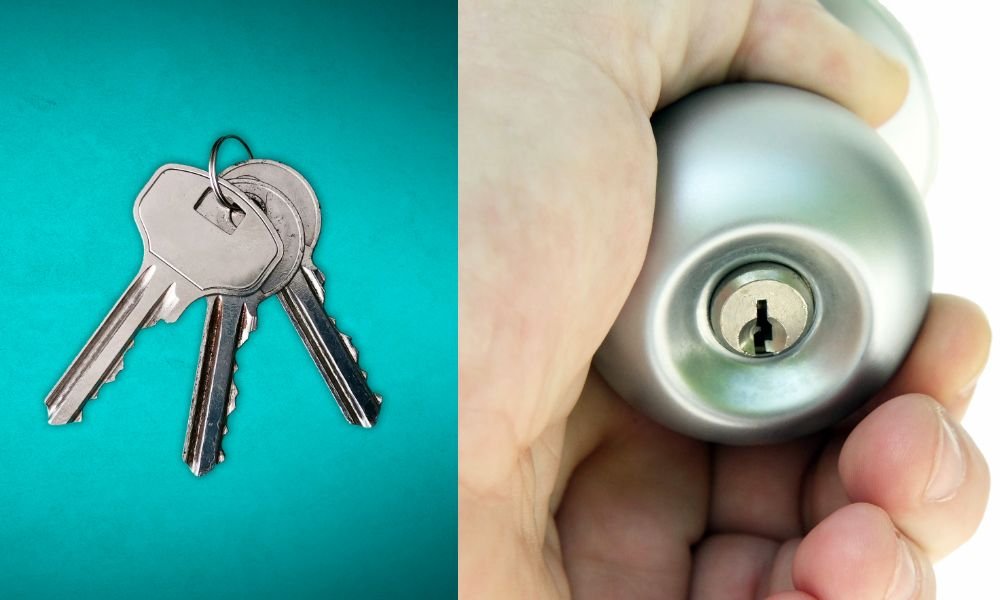Lockpicking is a skill that has intrigued many over the years. Whether you’re locked out of your room or simply curious, knowing how to pick a lock with a bobby pin can be handy. This blog will guide you through the process of how do you pick a lock with a bobby pin, using simple tools and methods. Keep in mind that this knowledge is provided solely for educational purposes. Always respect others’ property and privacy.
Understanding the Basics of a Lock
Understanding how a lock function is crucial before attempting to pick one. Inside a typical lock are several pins that block the cylinder from turning unless the correct key is inserted. These pins align with the key’s unique cuts, enabling the lock to rotate smoothly. To pick the lock, you need to replicate the key’s effect by manipulating the pins. By carefully lifting each pin using a bobby pin, you can simulate the action of a key. The pins need to be set in the correct position to unlock the mechanism. This process requires patience and precision, as the goal is to move the pins one by one until the lock turns freely.
Choosing the Right Bobby Pin
Not all bobby pins are the same, so choosing the right one is crucial. For successful lockpicking, pick a sturdy pin that won’t bend or snap under pressure. Flimsy or thin pins can easily lose shape, making them ineffective during the process. A metal pin with a plastic tip is ideal for this task. Carefully remove the plastic tip to create a sharp end, which is essential for manipulating the lock’s internal pins. This sharp end helps in lifting and setting the pins inside the security device, making it easier to achieve the desired result. By selecting the correct bobby pin, you increase your chances of successfully picking a lock.
Preparing the Bobby Pin

Begin by carefully straightening your bobby pin, transforming it into a makeshift pick. Next, gently bend one end of the pin to create a small hook. This hooked end is essential for lifting and manipulating the lock’s internal pins. Ensure the bend is slight, allowing for precise control within the keyhole.
For the other end, craft an L-shaped bend, which will function as your tension wrench. This wrench is crucial for applying rotational pressure on the latch, similar to turning a key. It provides the necessary tension needed to set the pins, enabling the lock to turn and open. With both ends of the bobby pin prepared, you now have a basic lock-picking tool ready for use.
Inserting the Tension Wrench
Place the L-shaped end of the pin into the lower section of the keyhole. This section serves as the tension wrench. Apply gentle force in the same direction you’d turn the key. This tension is vital, allowing you to control the pins without them returning to their original position.
Pressure can differ depending on the specific lock, so you might need to experiment a bit. Finding the right balance can be tricky, requiring patience and practice. By gradually adjusting the tension, you’ll learn to manipulate the lock pins effectively, making the process smoother over time.
Picking the Pins
With the tension wrench positioned, it’s now time to begin the picking process. Carefully insert the bobby pin’s hooked end into the upper section of the keyhole. Gently lift each pin individually, feeling for a subtle click that indicates it’s set correctly. This method requires steady hands and patience.
Repeat this method for each pin until they are all properly set. Rushing through can cause the pins to reset, forcing you to start again. Take your time and avoid applying too much force, as delicate movements yield the best results. Remember, precision and patience are essential in achieving success with this technique.
Understanding Feedback from the Lock
When picking a lock, paying close attention to the lock’s feedback is essential. A correctly set pin often results in a subtle give within the tension wrench, signaling progress. If resistance is felt, it might indicate excessive pressure or an improperly set pin, requiring adjustment.
Interpreting these signals demands practice, but mastering this skill is vital for effective lockpicking. Understanding the nuances of the feedback from the lock helps in distinguishing between a correctly set pin and one that needs further manipulation. This skill, although challenging at first, becomes easier with experience, leading to more consistent and successful lockpicking attempts.
Releasing the Tension Wrench

When all pins are aligned, gently release the tension wrench. If performed accurately, the security device will rotate, allowing access. It’s crucial to maintain steady control during this step. Releasing the tension too quickly can cause the pins to reset, forcing you to begin again. Patience and practice are essential. Mastering this technique requires time, so don’t be disheartened if it doesn’t succeed on your first attempt. Each trial enhances your skill and familiarity with the process. With persistence, you’ll refine your approach, achieving consistent success.
Troubleshooting Common Problems
Sometimes, despite setting all the pins, the lock might still not turn. This issue can arise from several factors. You might be applying excessive or insufficient tension, or perhaps a pin hasn’t been fully set. If you encounter this problem, try resetting the lock and start the process again. Pay careful attention to each step, adjusting as needed. With consistent practice, you’ll get better at identifying and resolving these common issues. It’s important to stay patient and refine your technique. Over time, you’ll improve your ability to pick locks effectively and handle these challenges more easily.
Legal and Ethical Considerations
Learning to pick a lock might seem like a valuable skill, but it’s essential to grasp the legal and ethical boundaries. This knowledge should be reserved for situations where you have explicit permission or are dealing with your own locks. Misusing this ability can lead to severe legal repercussions, as unauthorized lockpicking is against the law.
Respect for others’ belongings is crucial when applying such skills. Use them wisely and only in appropriate circumstances. Practicing responsible behavior ensures that your knowledge doesn’t harm others or result in unintended consequences. Always remember that with great power comes great responsibility, so exercise caution and make ethical choices when it comes to lockpicking.
Conclusion
Learning to pick a lock using a bobby pin is a handy skill, demanding patience and continuous practice. This method, while simple, requires attention to detail and a steady hand. By carefully following each step, anyone can master this technique. However, this knowledge should be used with caution and integrity, ensuring that it’s never applied inappropriately.
Understanding the ethical implications is crucial. Always use this ability responsibly, keeping in mind the legal boundaries. Misuse can lead to serious consequences, so it’s important to respect others’ property and privacy. This skill is meant for legitimate situations, like accidental lockouts. Apply your newfound expertise for good, ensuring it benefits rather than harms.



